Linux进程通信系列文章将详细介绍各种通信方式的机制和区别
1.进程间通信
每个进程各自有不同的用户地址空间,任何一个进程的全局变量在另一个进程中都看不到,所以进程之间要交换数据必须通过内核,在内核中开辟一块缓冲区,进程A把数据从用户空间拷到内核缓冲区,进程B再从内核缓冲区把数据读走,内核提供的这种机制称为进程间通信。
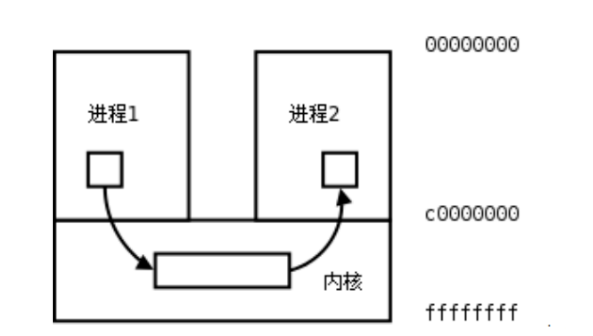
2、进程间通信方式
3、进程间通信-管道(pipe)
3.1 管道是如何通信的
(1)父进程创建管道,得到两个⽂件描述符指向管道的两端
(2)父进程fork出子进程,⼦进程也有两个⽂件描述符指向同⼀管道。
(3)父进程关闭fd[0],子进程关闭fd[1],即⽗进程关闭管道读端,⼦进程关闭管道写端(因为管道只支持单向通信)。⽗进程可以往管道⾥写,⼦进程可以从管道⾥读,管道是⽤环形队列实现的,数据从写端流⼊从读端流出,这样就实现了进程间通信。

3.2 利用管道实现通信
#include "stdio.h" #include "unistd.h" #include "string.h" int main(int argc, char* argv[]) { int fd[2]; int ret = pipe(fd); if (ret == -1) { perror("pipe error "); return 1; } pid_t pid = fork(); if (pid == 0) // child { close(fd[0]); int i = 0; char* msg = "i am child "; while (i < 5) { write(fd[1],msg,strlen(msg)); sleep(2); i++; } } else if(pid > 0) { close(fd[1]); char buf[256] = {0}; int j = 0; while (j < 5) { int n = read(fd[0],buf,256); if (n>0) { buf[n] = '�'; } printf("%s",buf); j++; } } else { perror("fork error "); return 1; } return 0; }
运行结果:

3.3 管道读取数据的四种的情况
(1)读端不读,写端一直写
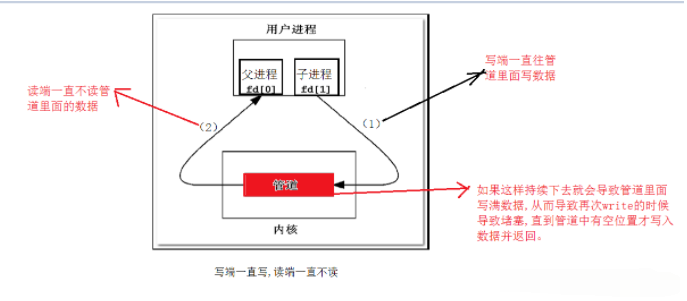
(2)写端不写,读端一直读
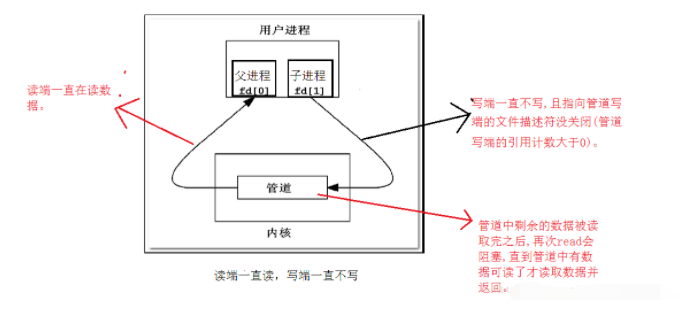
(3)读端一直读,写端关闭
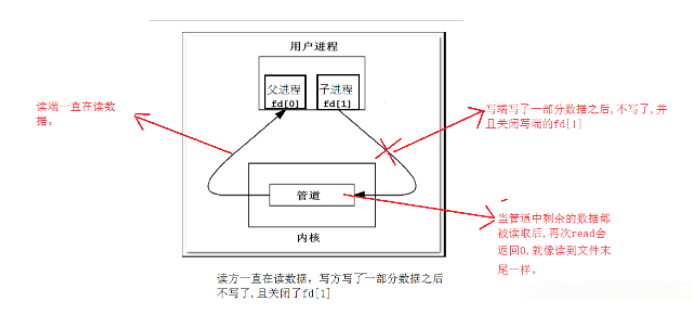
(4)写端一直写,读端关闭
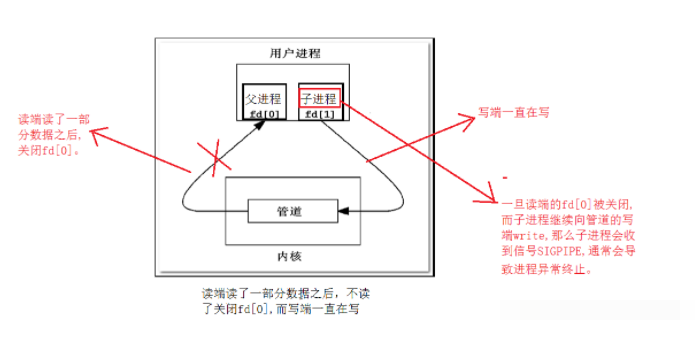
#include "stdio.h" #include "unistd.h" #include "string.h" #include "sys/wait.h" #include "sys/types.h" int main(int argc, char* argv[]) { int fd[2]; int status = 0; int ret = pipe(fd); if (ret == -1) { perror("pipe error "); return 1; } pid_t pid = fork(); if (pid == 0) // child { close(fd[0]); int i = 0; char* msg = "i am child "; while (i < 10) { write(fd[1],msg,strlen(msg)); sleep(1); i++; } } else if(pid > 0) { close(fd[1]); char buf[256] = {0}; int j = 0; while (j < 5) { int n = read(fd[0],buf,256); if (n>0) { buf[n] = '�'; } printf("%s",buf); j++; } close(fd[0]); ret = waitpid(pid,&status,0); printf("exit single(%d),exit(%d) ", status & 0xff, (status >> 8) & 0xff); } else { perror("fork error "); return 1; } return 0; }
运行结果:

使用kill -l 查看13号信号,可以知道13号信号代表SIGPIPE。
4、管道的特点
(1)管道只允许具有血缘关系的进程间通信,如父子进程间的通信。
(2)管道只允许单向通信。
(3)管道内部保证同步机制,从而保证访问数据的一致性。
5、管道的容量
测试管道容量大小只需要将写端一直写,读端不读且不关闭fd[0],即可。
#include "stdio.h" #include "unistd.h" #include "string.h" #include "sys/wait.h" #include "sys/types.h" int main(int argc, char* argv[]) { int fd[2]; int status = 0; int ret = pipe(fd); if (ret == -1) { perror("pipe error "); return 1; } pid_t pid = fork(); if (pid == 0) // child { close(fd[0]); int i = 1; while (i) { write(fd[1],"A",1); printf("pipe capacity: %d ",i++); } close(fd[1]); } else if(pid > 0) { close(fd[1]); waitpid(pid,NULL,0); close(fd[0]); } else { perror("fork error "); return 1; } return 0; }
运行结果:

由此可见,管道大小为64k